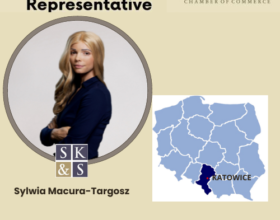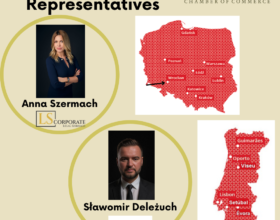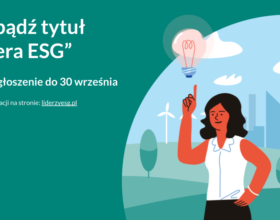
More and more Poles shop via their smartphones
and even more use them for payments
Traditional stores still remain the most popular sales channel in Poland, but the number of people shopping via mobile devices is growing rapidly. Already 17% of Poles make their purchases via a smartphone at least once a week, and 7% do it every day. In addition, 39% of consumers pay for their daily shopping using mobile payments – according to a report by the consulting company PwC „Poles shopping: 5 pillars of modern trade„.
The Internet sales market is a segment which is developing dynamically in Poland. According to forecasts, it will reach the value of about PLN 45 billion in 2018, and it may exceed PLN 60 billion in 2020.The share of e-commerce in total retail trade is around 5%, but it will catch up to the global average of 10% in the near future.
“The trade sector is growing dynamically before our very eyes. The change in consumer habits plays an important role in the ongoing revolution. The pattern, which has been repeated for decades, whereby customers have been purchasing their favourite brands in nearby shops, is now becoming a thing of the past. The digital transformation has changed shopping habits, distance has lost meaning, and brand loyalty has declined,” says Krzysztof Badowski, partner at PwC, head of consumer goods and retail for Central and Eastern Europe.
According to the PwC report, the number of consumers making their purchases on desktops has decreased in recent years. While in 2013, a total of 27% of survey participants worldwide used them (at least once a week), in this year’s edition it was only 20%. In Poland, this ratio amounted to 23% in 2018. Computers are increasingly being replaced by mobile devices. In Poland, 17% of respondents shop with their smartphones at least once a week (9% last year), and 7% of consumers do so on a daily basis.
The most popular goods purchased online in Poland include clothes and shoes (79% of consumers have bought them online at least once a year), cosmetics (75%), books, music, films and video games (73%), furniture and home furnishings (62%), and computers and electronics (61%). Respondents are the least inclined to purchase food products via this channel (47%).
According to data collected in the PwC report, mobile payments are also growing rapidly. Currently, 39% of Polish consumers eagerly pay for their daily shopping using mobile payments.
Social media turned out to be the most frequently used source of shopping inspiration. They are used by 58% of Polish consumers. Price comparison engines are also ranked high on this list. They are currently visited by 43% of Internet users, although their popularity has significantly decreased in comparison with the previous year (at that time it was 60%).
“Today, brands cease to be just sales entities, and become actors in social life – both creators and symbols of culture simultaneously. Brands that are aware of this are building their position based on the mission they want to achieve, and the social media space gives them the opportunity to manifest these views. Through social media, brands are moving away from being just messengers and become partners in the dialogue with consumers, making themselves rich in content to the extent they have never done so before,” points out Marta Marczak, director for brand strategy at PwC.
Experiences are more important than things, renting is becoming more and more popular
The survey conducted for the purposes of the report also shows that more and more people prefer to spend their resources on intangible goods. Thirty-three per cent of respondents said they started spending more on experiences such as travel, training, eating out, and cultural events. Slightly less, 30%, spend larger amounts on buying new items. The desire to spend time with family and friends (this is what 48% of respondents indicated), change their life priorities (41%), the period of life they’re at (39%) and eagerness to invest in themselves (38%) all have an impact on changing Poles’ consumer behaviours.
PwC experts emphasize that the willingness to rent goods and have access to selected services as an alternative to owning things is an increasingly important trend that’s visible among Polish consumers. Poles are most likely to rent: cars (44%), other means of transport such as bicycles and scooters (39%), sports and tourist equipment (39%), DIY and power tools (35%). Twenty-three per cent of respondents said they would not want to rent anything.
How AI is changing the trade sector
There are three areas where artificial intelligence implementations can be seen in trade. First of all, it’s increasingly precise, self-learning algorithms responsible for personalising, segmenting, and matching ads to groups of recipients as well as product and service recommendations. Secondly, there are solutions responsible for consumer communication and care. Thirdly – artificial intelligence in trade is the entire area of optimising packaging, order processing, storage, and logistics through the use of appropriate algorithms and robots.
It is also worth looking at the use of AI devices by consumers themselves. Worldwide, 10% of respondents state they own AI-based devices, such as robots or personal assistants. In turn, almost every third respondent admitted they plan to purchase such a device. Interestingly, in Poland 13% of the respondents declared that they have artificial intelligence-powered devices and 40% expressed their intention to buy them. What impact can they have on consumer behaviour? When asked about this, respondents from Poland declare that they spend as much money on shopping as they did before owning them (49%), and a much smaller group (18%) admits that they spend more.
“The new generation of voice interfaces is an extremely interesting area of AI, which are storming into customers’ homes and smartphones. Computers finally understand what we are saying to them and respond to our commands. For example, you can use your voice to order an Uber, „put” products into your shopping cart, buy digital goods, make a bank transfer, and even control smart home solutions. Other applications include AI-powered image recognition and analysis (computer vision), which is used both to identify people and goods in offline stores, to find similar products to those photographed with a smartphone, and even to showcase product-related inspirations,” says Michał Kreczmar, director for digital transformation at PwC.
Delivery – the faster, the better
Thirty-six per cent of surveyed Poles expect delivery the next day after placing an order, while 35% of respondents would like to have the purchased goods in their hands within two days after the transaction. Eleven per cent of respondents would like to receive their purchase on the same day.
PwC experts emphasize that many consumers are ready to pay additional costs to receive their parcels faster. Twenty-three per cent of Polish respondents are willing to pay extra for delivery within 3 hours (it is possible e.g. in large urban agglomerations), and 40% of respondents would pay an additional fee for same-day delivery. Twenty-five per cent of customers will pay more for next-day delivery.
Interestingly, 17% of Polish respondents declared that they would trust drones and agree to have all types of goods delivered with their use. Twenty-six per cent stated they would go for drone delivery only in the case of less valuable products.
More information: pwc.pl/handel2018


